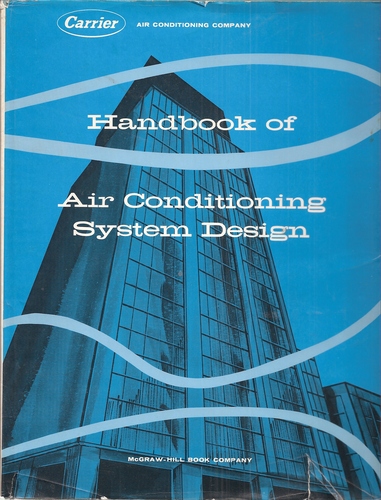Handbook of Air Conditioning System Design pdf download
Par houghtaling troy le vendredi, juin 3 2016, 23:36 - Lien permanent
Handbook of Air Conditioning System Design by Carrier Air Conditioning Company


Handbook of Air Conditioning System Design Carrier Air Conditioning Company ebook
ISBN: 007010090X, 9780070100909
Publisher:
Page: 786
Format: pdf
A home that illustrates how a number of simple cooling techniques that were combined in this house to avoid the need for air conditioning in this south Florida climate. To show how ordinary differential equations can be used model coupled and nonlinear oscillators and how their solutions are related to the behaviour of the physical systems. The development of a computer assisted design, analysis and testing system for analysing students' performance. Proceedings of the 8th International Computer Assisted Assessment Conference, pp165-175. Passive Cooling -- Part 1 One house was built conventionally, and the other was equipped with a wide array of features to reduce energy consumption, including: reflective roof, internal duct system, thermal mass inside insulation, high efficiency and properly sized AC, well designed overhangs, and optimal windows. I would like to now present some basic design strategies that have attempted to mitigate the use of the AC system or disband it altogether. Handbook of Air Conditioning System Design English | ISBN: 007010090X | 786 Pages | PDF | 69,8 Mb This is good book for education and working reference., October 10, 1999 I had been using t. HVAC (Heating, Ventilating, and Air Conditioning) refers to technology of indoor or automotive environmental comfort. In some cases when an HVAC system is having particular difficulty in supplying the required amounts of airflow to all zones, many mechanical contractors will recommend the removal of every other turning vane at each fitting in the system in Each system is designed to a specific total static pressure, and removing or adding turning vanes where they have not been accounted for in the engineer's calculations will make the system function differently than intended. While energy efficiency has always been a high priority of HVAC manufacturers, the continual drive for higher efficiencies combined with environmental changes to refrigerants used calls for a new look at system designs.